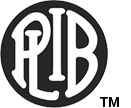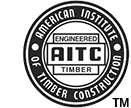Wood-packaging subscribers make a wide variety of products that fall under the “wood packaging” category. Some subscribers to this program make products only for in-house use, while others sell raw materials. Some manufacture new wood packaging and offer it for sale and still others recycle used products. Due to the wide range of options we recommend contacting our office directly so that we may assist you in finding the right wood-packaging program options to meet your needs. Please call us at 253.835.3344 or email us.
If you have any questions about specific countries or to subscribe to PLIB’s ISPM 15 wood packaging program, call us at 253.835.3344 or email us.
- Wood packaging material made entirely from thin wood (6 mm or less in thickness)
- Wood packaging made wholly of processed wood material, such as plywood, particleboard, oriented strand board, or veneer that has been created using glue, heat or pressure, or a combination thereof
- Barrels for wine and spirit that have been heated during manufacture
- Gift boxes for wine, cigars, and other commodities made from wood that has been processed and/or manufactured in a way that renders it free of pests – sawdust, wood shavings, and wood wool
- Wood components permanently attached to freight vehicles and containers.
ISPM 15 compliant wood packaging is wood packaging that has been treated with a recognized treatment and labeled with the ISPM 15 internationally recognized mark.
ISPM 15 is the acronym for International Standards for Phytosanitary Measures #15. It was created by the International Plant Protection Convention (IPPC), a part of the United Nation’s Food and Agriculture Organization. The standard addresses the need to have wood packaging made with solid wood components treated using an approved method to reduce the risk of transmitting invasive non-native pests and pathogens that could potentially destroy forests. ISPM 15 requires that packaging which has been treated be labeled with a special internationally recognized trademark that certifies it has been properly treated. Recognized treatments include heat treating (HT) and fumigation with certain approved chemicals.
- ALSC Wood Packing Material Program
- Animal and Plant Health Inspection Service (APHIS)
- Canadian Heat Treated Wood Products Certification Program (CHTWPCP)
- Canadian Wood Pallet & Container Association (CWPCA)
- International Plant Protection Convention (IPPC)
- ISPM 15
- National Wooden Pallet and Container Association (NWPCA)
- Pallet Design System Software
- U.S. Customs and Border Protection (CBP)
- USDA Foreign Agriculture Service (FAS)
- Western Pallet Association (WPA)
Need more assistance? Call us at (253) 835-3344 or contact us via email.
ISPM 15 FAQ
Understanding the ISPM 15 regulation and how it applies to your particular situation can be confusing. PLIB has compiled a list of commonly asked questions to help you better understand the regulation, the IPPC mark, and the approval process for ISPM 15 wood packaging. If you have a question that is not on our list or if you want to learn more about becoming an approved ISPM 15 wood packaging facility, please call (253) 835-3344 or contact us via email and one of our expert staff will be happy to assist you.
Many countries around the world have adopted the ISPM 15 regulation for solid wood packaging since its inception in 2001, and the list continues to grow. A list of these countries can be found here.
Exporters can also check with the plant health authority in the destination country to verify what the requirements are for solid wood packaging. Even if your destination country does not require ISPM 15 wood packaging, it is a recommended practice that any wood packaging moving through international borders be certified to ISPM 15 standards to avoid potential issues at the port of entry.
You can also check the USDA APHIS website for additional information.
Untreated lumber poses a risk of carrying harmful plant pests. This standard was developed to reduce the risk of transferring those pests across international borders. Every locale likely has some pest(s) that are native to that locale but which could be extremely harmful to local plants in a different region. For example, America and Canada have a microscopic pest, called the Pinewood Nematode that is hazardous to the trees of other continents. China has the Asian Longhorn Beetle that is hazardous to native trees in the United States and Canada. ISPM 15 attempts to limit or reduce the chances of such pests harming native flora and fauna. Since wood packaging (boxes, pallets, crates, dunnage, etc) is typically made from the lowest grade of lumber, the instances of pests is often higher due to the presence of bark.
Each country is different. Some countries will fumigate the package (contents and all) and charge the shipper at a premium rate. Some will just deny the shipment and require that it be returnd to the original shipper. There have even been cases of the shipment being incinerated or buried in a landfill. Still others may re-export only the packaging and charge a premium rate for replacing the non-compliant material.
ISPM 15 certification is a quality control program specifically for finished wood packaging items such as pallets, crates, boxes and spools that have solid wood as a component as well as dunnage. As such, there is no such thing as “ISPM 15 certified lumber.” As part of the ISPM 15 quality control program, use of the International Plant Protection Convention (IPPC) certification mark is licensed to registered wood packaging producers. These registered facilities apply the IPPC mark to the finished pallets, crates, boxes, etc. While it may be possible to build a pallet/box/crate from lumber that has an HT mark visible on each piece, this often is not practical. The IPPC mark certifies that the entire wood packaging item, not just one piece of solid wood, meets ISPM 15 requirements. It is important to think of the customs officials, as well. Being forced to look at every board in a wood packaging item would be an overly cumbersome and time-consuming process.
 The International Plant Protection Convention (IPPC) mark shown here is applied to the wood packaging. This mark is commonly applied as an ink stamp, stencil or brand on a clearly visible exterior surface of the packaging. The IPPC mark is applied to a minimum of two opposite sides and certifies that all solid wood has met the heat treatment requirement.
The International Plant Protection Convention (IPPC) mark shown here is applied to the wood packaging. This mark is commonly applied as an ink stamp, stencil or brand on a clearly visible exterior surface of the packaging. The IPPC mark is applied to a minimum of two opposite sides and certifies that all solid wood has met the heat treatment requirement.
It depends. Anyone can reuse certified wood packaging so long as it is not altered by removing and replacing any existing components. In this case, the original International Plant Protection Convention (IPPC) mark remains valid. However, should the IPPC marked wood packaging item need to be repaired it will need to be re-treated. Re-treatment can be done by either a certified kiln facility or certified fumigator. Also, it is permissible to build onto existing wood packaging that has already been certified, assuming the existing portion of the item is not altered and the added material is certified as having been heat treated. An example of this scenario would be building a frame using HT lumber on top of an already certified pallet. In this case the manufacturer would place their IPPC stamp only on the frame that they added to the pallet. In either case, repairing or building onto existing wood packaging, you will need to be certified in the ISPM 15 program because repairing or adding on to IPPC labeled wood packaging requires re-stamping the item.
In 2002, ISPM 15 defined bark-free wood is defined as “wood from which all bark excluding the vascular cambium, ingrown bark around knots, and bark pockets between rings of annual growth has been removed.” Based on this definition bark found in the wane area would not be acceptable and would need to be removed prior to shipment. A list of countries that currently require wood packaging to be bark-free can be found in the ISPM 15 country list.
The United States Department of Agriculture (USDA) and the Canadian Food Inspection Agency (CFIA) will not issue phytosanitary certificates for wood packaging when the wood packaging is not itself the commodity being shipped. This is because there are already certification procedures in place that require the application of the IPPC mark to show compliance to ISPM 15.
Don’t see your question? Call us at 253.835.3344 or contact us via email.




